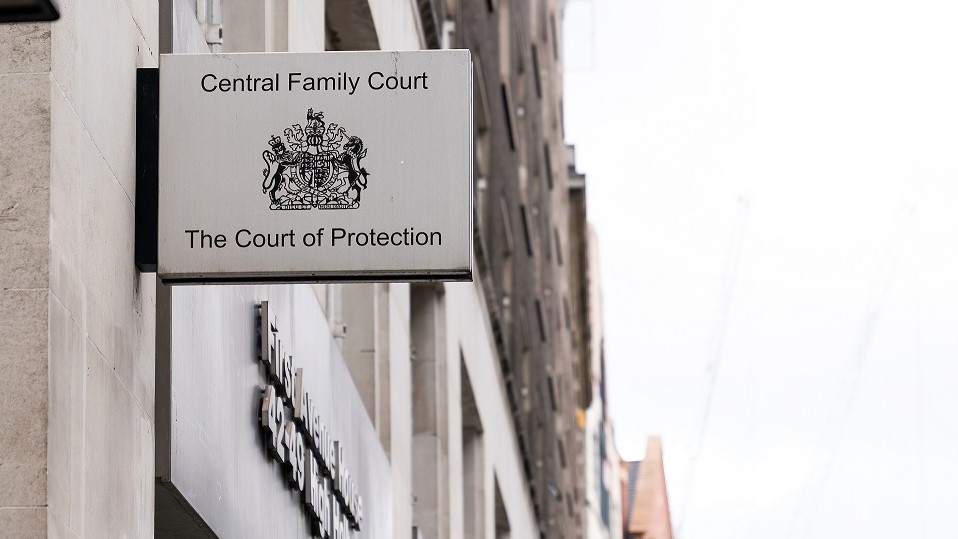On 3 and 4 December 2018, the first International Forum on Online Courts was held in London. There were 300 delegates from about 30 different countries. It undertook an international review of what is happening in many countries around the world. It looked at technological issues, matters of access to justice, practicalities for lawyers and the judiciary, examples of innovations and lessons to be learned. It was co-organised by the Society for Computers and Law (SCL) and by Her Majesty’s Courts and Tribunal Service (HMCTS) which, in the UK, runs the court service.
I was invited to attend. I’ve had the opportunity to speak at various conferences around the world on how family justice systems can benefit from digital innovations in respect of law, procedure and practice and challenges of access to justice.
This note is my perspective, for family lawyers internationally interested in the topic. It covers specific family law aspects but is a general overview, as I saw it, on matters of interest. I endeavour to take notes faithfully but responsibility for errors is mine and not the speakers! I don’t always identify speakers on the basis that it is the content and discussion which was important. I understand a full report will be available in due course from the SCL website (scl.org.uk). This is inevitably a personal note taken by me during the conference.
Introductory and opening presentations
At the beginning there were a number of important keynote and other presentations. It was introduced by Richard Susskind, who for many years has been the IT guru for the legal profession, helping us understand what is possible and what could well occur and how we should be planning for our professional futures, and by Susan Acland-Hood, chief executive of HMCTS and therefore responsible for the digital innovations for the English courts.
In their introductory remarks, Richard and Susan said that the principles of justice are enduring but the practice of justice doesn’t have to be. We can do things now which our predecessors could only dream of. But IT can only ever be a means to better justice and not an end in itself. The world has just passed the 50% mark of the population having availability to the Internet. But only 43%, according to the OCD, have the protection of the law. Connectivity to the Internet has to be used to improve systems of justice. In many countries around the world, justice systems are creaking, getting slower with increasingly poor service. Traditional systems are under great strain. In many countries, our model of service does not scale up to 21st century demands. This is where technology comes in. It gave the opportunity to rethink and open up justice.
It was important to distinguish automation and transformation. Automation is not fundamentally changing things. It’s grafting technology onto old practices. It is short-term. It may be necessary to work and indeed to adapt but it cannot be long term. Transformation is building systems from the ground up. New ways of working and creating justice.
An online court means several things to different people. It could be a virtual court which is a physical hearing when some are on video link. There may be no actual hearing physically taking place in any location but everyone can see each other as they interact. It might be online dispute resolution, where the dispute itself is resolved without a physical hearing and through online and digital processes e.g. including judicial involvement.
Truly Online Courts are extended courts. There is obviously access to the web. It offers guidance and help to users to use the digital process and understand the facilities. It is an alternative mechanism for getting to an outcome. Judges are not in a physical courtroom but are nevertheless conducting a judicial function. It\’s not a virtual court as they are not altogether at the same time and visible to each other. It is this online court which was the primary focus of the conference.
In a further challenge to the legal profession, albeit any alert member of the profession should have realised what was happening by now, the digital technology and online Courts would further advance the opportunities for self-represented litigants rather than compelling use of lawyers, certainly full-service lawyers.
Lord Burnett, the Lord Chief Justice of England and Wales, spoke about how technology had recently jumped very fast. He said there was tendency by some lawyers to be frightened but instead it should be harnessed to better serve and better access justice. It was important to embrace what we can do to improve our justice system. He said we are a generation called upon to review the fundamentals of the way we work. He emphasised that many, including those on low incomes, have little access to justice and we cannot ignore new ways which may actually help them. Litigation is expensive and technology may provide answers and solutions. He looked at the eBay process and said we should not be frightened of learning from them. He spoke about available technology. For many poor, laptops and tablets are out of the question. But smart phones were with very many these days. Perhaps it was necessary to create systems, forms, procedures and perhaps some hearings for the smart phone generation, thereby giving access to justice from the palm of the hand. Justice optimised for the smart phone. Direct to the citizen. Because the citizen had to be at the heart of the design process. Justice had to be sensitive to their needs. There had to be real-time feedback which had to be honestly dealt with. What do users want by way of access to justice? They want it quick and inexpensive. We must always test our assumptions of justice against that.
He went on to say that we must modernise our courts. We must look at the Dubai financial dispute centre and in China. All judges and lawyers need to examine their ways of working and need to embrace change for a better system of justice. There could be no compromise about open justice. Technology could make justice more open. There is no need for a physical presence of a spectator in court to see justice in operation. It may mean less final hearings and a move to submissions in writing.
Throughout this was artificial intelligence. This will transform. It is already used in legal advice, the merits of a claim, indicative decisions and facilitating early settlements. He doubted it would be a complete substitute. But he said we are in the foothills, not even the uplands, of what might be possible. It was vital we evaluated and educated continuously.
Richard Goodman from HMCTS, heading up some parts of the online work, spoke about how it was important to reach those who feel shut out and excluded at present by the justice system. He said it was vital that there was available face-to-face support. Paper will not be turned off in the foreseeable future. But digital processes save government resources. In relation to divorce, previously 40% of divorce petitions were rejected by the court service for technical defects on the face of the document. With the digital process it is down to less than 1%. This saves time for the parties, frustration and resources. In respect of video hearings, he felt it was important to create respect and authority of the court. This is not just facetiming relatives. But equally it was better for parties who were unable to travel, for those with health, immigration or other circumstances making attendance difficult.
David Gaulke, the Lord Chancellor, in effect the UK Minister of Justice, made similar sentiments of building on new ways to improve old ways. He spoke to the common law experience which he said had to change and adapt. Many layers of the court system had not changed for many years. He referred to the justice system as a secret garden designed by experts, inhabited by lawyers and which put people off from entering even though they were the ones who needed to pursue justice. He said that lawyers often speak in terms of a day in court but he suspected more members of the public would prefer speed and efficiency in outcome. Lawyers give advice but are often undertaking unnecessary work which could be replaced. The legal services sector in the UK needed to respond to the way people now had a need for legal services. The technological revolution is global and the UK needed to build on collective expertise.
Presentations from countries around the world
Both on the first day and at various other times during the conference there were presentations and this is only a summary.
In New South Wales, Australia, 60% of courthouses are over 100 years old. It is hard to deal with the requirements of modern justice in such an environment. They were working against many intrinsic obstacles. Moreover, they didn’t have enough data to understand sufficiently what was necessarily always needed. (I consider this is a problem in many countries in my experience in family justice where either for reasons of resources of government, lack of awareness of the need for the data, confidentiality or other reasons there is just not enough information about what are the outcomes in cases across the board, the use of particular court applications by sectors of society and so many other data requirements.) In New South Wales they had learned of the importance of a roadmap from the beginning of the process. It was important to work out in advance where it was intended to go. It was crucial to work hand-in-hand with the users, preferably starting with those working with the more vulnerable users, then looking at what was possible through digital technology and only then moving on to work with the lawyers. This lesson was repeated by several other countries.
The Netherlands has seen huge progress. Criminal law is now digitalised without paper. 85% of all court files are digitalised. They have a very online system. Their next step is file preparation with artificial intelligence.
Singapore is a small nation-state with no natural resources but a lot of wealth. It has had to tackle digital use where many law firms are small and not often well resourced. In 2018 mobile usage had overtaken fixed lines. There was free Wi-Fi in all centres. They had a digital signature which was the same ID for all interaction with any government department. So there was no need for any extra ID for dealing with the courts. (I wondered how this might have implications in some jurisdictions for privacy and government snooping and is an issue that will inevitably crop up where this sort of seamless ID is adopted.) It was pointed out that although automation may be good, it also ran the risks of magnifying inefficiency of existing systems. This was why it was important for transformation, building upwards rather than digital building on existing. There was a danger of overpromising benefits from technology. Not every aspect of a court system could be simplified or technologicalised. There had to be realism. The central courts were moving to a 40 story new tower block which was specifically geared to the use of technology and therefore enabling better progress to paperless courts and online access
The USA contribution started starkly. The poor have access to USA courts in the same way that Christians had access to the lions in the Roman arenas. They have 15,000 courts with some having specialisations such as family law. They triage i.e. resolve disputes at the lowest level possible. The so-called better judges are reserved for those cases which really need attention. ODR should be the primary entrance. Not mandatory and there should be an opt out process. The USA is, of course, a federal jurisdiction and the position is very varied. Some have made a lot of progress. In some states, a significant amount of crime and family law work is now either digitalised or working towards a form of ODR. There is general public satisfaction. In some states, mediators are used to work with the court process to offer support. ODR linked mediation produces far quicker settlements and, it is perceived, far more satisfactory outcomes.
India has a problem with many levels of courts with different procedures. To create one software for them all has been really difficult. They have had to use a free and open source. The numbers are staggering. There are 28 million cases pending in the lower courts. There are 5,400 cases pending in the Supreme Court. Overall there is a 23% shortage of judges, but a 40% shortage in the High Court. India is endeavouring to give all judges access to software about their ongoing cases and future lists. At the moment access of information for litigants is very low. But they are working to produce information on smart phones about the date of next hearings. Often members of the public are not aware in time of the hearing which means it is adjourned and therefore remains pending and not resolved. They have a resource problem in that many have no electricity and therefore connectivity is via solar power. Every opportunity should be taken to afford information about the justice system. There are touchscreen kiosks in court offices and elsewhere. Text messaging is provided as this is easier sometimes than email or equivalent. An electronic court service is being introduced which will give millions details of cases online. At the moment there are 68 million judgments available online.
China is another colossal population country and has made huge strides in digital access. It has threefold elements of interconnectivity, transparency and intelligence. There are 3,500 courts and 10,000 People’s Tribunals which are all connected via a shared website and common platform. They can communicate with each other. 36 million judgments have been published and the court service has 5 billion visits annually. To improve efficiency, 75% of courts are accessed via a free hotline. Auto translate services convert court hearings into text via voice recognition and therefore make accessible to those who don’t attend. The public can view most court hearings remotely. It has been necessary for big data management service platforms. It is handling 150 million cases, undoubtedly the largest judicial resource library in the world. Within this, there must be streamlining of judicial processes and this requires surveillance of the courts.
Denmark, like the Netherlands, has made rapid progress. It now only has digital files with no paper files. Access to case information, deadlines, draft orders, court fees, timetables are all available online. Judges see outstanding paperwork for their cases in advance. Denmark is now aiming at a higher degree of consistency of orders and procedures. The intention is to create greater trust in the citizens of the justice system. There should be shorter turnaround on time. There should be same form of letters and communications across the country. (I perceive this as one of the chief advantages and in England there are so many variations in family justice of local courts. I perceive one of the benefits of regional centres for family law work as distinct from it all being dealt with in local courts is greater and higher standardisation and less regional variation.) In the civil courts, it is mandatory to use the online process with only a few exceptions e.g. foreign companies, non-Danish nationals, digitally challenged. The online process is viewed as the biggest change in a hundred years with a huge impact on management of justice.
Japan admits it is not going as fast as it would want. Some cases are using elements of digital technology but there is a long way to go. There are perceived to be distinctive cultural and legal traditional aspects to the existing justice process.
Azerbaijan has all its justice elements online. The case will be reviewed in three days of submission and many take place without a hearing. It has produced a fast turnaround service.
Brazil is a country of 100 million with 1 million lawyers. There is a backlog of 100 million law cases. It takes three years for a hearing and eight years to enforce a decision. So there are lots of incentives. Work is being undertaken on automation and liberating the civil servants from repetitive tasks. Government initiatives are being developed from the private sector. One distinctive element of the contribution from Brazil was that there were no pilots or consultation before the online systems were launched. This caused surprise from many delegates.
Canada had had an interesting experience. Several years ago attempts were made at reform of the justice process in using IT. $1 billion was invested. It failed. It was closed down. There were many reasons. The consequence is a reluctance to embrace again. The judiciary are not on board by and large. It has therefore been necessary to start again modestly. Family law has been one of the new areas with a technological portal, standardised documents and linked in January 2019 to ADR opportunities. But the bad experience of the past was holding back the future. (I feel the same in England where over many years the administrative child support agency has been completely shambolic and let down so many parents and has been an entirely discredited process, with no respect from practising lawyers. I know that whenever I have suggested use of a formula or similar process, the easy refrain is to refer to the failures of the CSA. Again, no headway because of past failures.)
Germany has an interesting approach in the context of the conference. If it’s not broken, don’t fix it. The fax machine was still heavily used. Email service doesn’t count. There is still reference to wet signatures. There is very little progress.
Ireland is using voice recognition software in court so evidence is available immediately. Videoconferencing is used with remote or vulnerable witnesses.
In the Caribbean, judgments have been put online and have been evolving with work since 2005 onwards. From 2017 there was a fully functional online court with electronic filing and adjudication. Greater access digitally to the courts has reduced paper and therefore costs of transportation and reduced costs of running the courts.
Future innovations
The second day looked at aspects for the future, building on knowledge of what was happening.
There was a keynote speech from the chair of the Canadian Civil Resolution Tribunal which has made significant ground breaking progress. It is the first online system fully integrated into civil justice. It was referred to as having been modelled on eBay but for the justice system. She said that 87% wanted DIY without legal representation. 81% would use an online system if user-friendly and available 24/7. Experience was that 50% were using the online system out of normal hours. At least 200 language services were available by telephone. There was an online chat forum being used by 10% of the users. Mediation in its broadest sense was being accessed as a form of help although not as some family lawyers would understand in the purer technical sense. There are accordingly many built-in opportunities for Resolution before having a final hearing and only 6% reach adjudication. It was a myth that everyone wanted their day in court; this is what lawyers think. They wanted a quick and efficient system. There are no downloaded apps and it can be accessed on smart phones. Mistakes had been made but user testing is the best strategy. She said it was fundamental to start testing with the vulnerable and community advocates working with the disadvantaged. In this way from the very bottom upwards it would be accessible to all. At each stage in the online process there were opportunities of performance indicators so that in real time those running the system could see the impact on members of the public. Only last in the testing process did it go before the lawyers. Mediation had been made mandatory. Adjudication was on written hearings and only occasionally oral. Then by Skype by phone.
Lord Briggs, a judge in the UK Supreme Court, said that the English legal system was a Rolls-Royce system designed by lawyers for lawyers. It is unaffordable to normal people, small or moderate applicants. It is dense and impenetrable. He said that looking at other systems, it was essential that structures were well-designed to enable accessibility and appropriate level of judges. ADR online was a crucial development. There had to be early advice available through the digital process. Not every case needed a trial. It was essential to free up from the tyranny of paper. Courts must have good Wi-Fi to help practitioners and judges. Provided the route to determination under judicial case management is working then the online court is perfectly good. There was a risk that it would not lead to more openness and transparency and it was necessary to examine how to overcome this. Issues of hacking had to be carefully considered. He said that all Supreme Court hearings were now live streamed and available around the world. The lead judge in the case was required to give a non-legally technical explanation. He was keen that progress was made across all courts although he said it would start in the Court of Appeal and so this is clearly a downward progress rather than building from the bottom upwards.
Dr Einy from Israel said that the introduction of online courts was the single most transformative element of justice as known. It was a change in the roles of key players. Online had been seen as an impediment of ADR rather than an opportunity. Only when seen as an opportunity will digital justice move on to the second generation. She envisaged human decision-making moving to automated fourth party engagement using algorithms, although other delegates were more sceptical. She said that justice systems do not collect enough data about what happens in the courts and therefore cannot take most opportunity to use that knowledge. She repeated that the opportunity was to start with a clean slate and build through digital processes. She said the devil was in the design. The design features were fundamental. She questioned whether we need so many procedures to get to substantive outcomes. Would people feel better about court procedures if it was an online experience? Perhaps easier, less scary and less likely to go wrong. The digital helps those not familiar with the legal. They can do so in their homes rather than in law firms. Will the parties feel more heard online than through an advocate they may have only just met and through terminology which is mostly meaningless? If the process was perceived as balanced, fair and open, will they feel better with a more familiar medium i.e. online than a lawyer led process? She repeated comments by others that the risk is technology will be seized by governments only for costs savings and efficiencies. But there was so much which could be done to transform. There was of course always concern about the digital divide, the digitally disadvantaged. She thought good design could mitigate this. (I have already seen this with the English divorce petition online which is a far more understandable question-and-answer process than filling in the hard form of petition.) She was also anxious that algorithms can produce vices and biases due to programming and the data used. There needs to be widespread consultation and not just with lawyers but to community groups especially for the vulnerable. What happens to mercy and compassion with online dispute resolution? Is it really only available face to face when judges see individuals in front of them or can it be made available through digital means? The devil in the design means emphasis must be placed on the design of the online process. There must be continued online learning to improve accessibility. We must maximise the use of machines but never lose sight of human values.
Judge Aitken on behalf of the UK tribunals said it dealt with 250,000 appeals in welfare tribunals annually with people in genuine physical and mental difficulties. They feel state benefits are not fair. Their cases evoke much sympathy. How can a digital system work for them? If people were engaged online, they were more likely to accept what had occurred, in their experience. They were less likely to require a physical hearing. Often they had felt listened to more through the online experience than the physical tribunal hearing. Having a hearing is not a driver for satisfaction. There were explanatory videos showing the options for resolution and information including the option of going to a hearing. Many preferred a form of online dispute resolution rather than a hearing. It was found to be efficient and actually fairer in some regards. They had stripped out case management. For them this was the devil in the detail. There was far greater and quicker reference to an initial oral hearing. As distinct from some other courts around the world, they felt they didn’t need transcripts of several hundred thousand cases a year.
Transparency is powerful but has its problems. It can cause powerful people to distort the process e.g. as found with domain arbitration litigation. Transparency is not always a guarantee of fairness. Transparency online is very different to pre-digital transparency. It needed a very separate analysis. It’s not always appropriate e.g. in some family courts. The chairman of the Bar, Andrew Walker, contributed that just because people put a lot on social media doesn’t mean the courts necessarily should do so. There can be a damage into much being available with the balance between privacy and transparency. Transparency is also different now that everything is in permanent form online. If parties don’t want transparency, they can go to private arbitration. The court system should expect to be more transparent as it is a state system. It is the system which needs to be transparent rather than necessarily always the individual cases
Joshua Rosenberg, a leading British legal commentator, spoke about the developments and the article he has written, continually updated, on digital progress, which is essential reading on these topics and which can be found here.
There was an incredible presentation by the Traffic Penalty Tribunal which has completely moved online. It deals with 25,000 cases per annum with 28 part-time adjudicators, primarily dealing with parking charges. Interestingly, the 12 administrative staff have now been moved to be support workers for people wanting help in using the system. It is a question of using existing resources better. It has also helped local authorities save time and costs and improve the amount of money they receive. It was said: justice is not a service but access to it is. The parking tribunal system has shown how a fully digital system available online can work. Each party identified how they preferred communication: email, text or telephone. The system was adaptable to all of them. Hearings were by telephone. No one wanted face-to-face. Admittedly this was only in the context of traffic penalties but nevertheless this was an experience in many other tribunals. The benefit was that satisfaction with the process led to 50% paying earlier. There are many benefits of the online process. One of the key elements was to avoid data migration. Run down the old cases through the previous system and work with the new incoming cases through the new system. This will be easier for some tribunals than others. But the data migration can be a real problem, clogging up the new digital systems.
In a discussion about the challenge to policymakers, it was asked if our legal outcome is the only litmus test of fairness? Might the process be fair which therefore make satisfaction greater? Will new online court processes improve access to justice and therefore improve satisfaction. For those in the common law process, there will be inevitably move from the old adversarial process to the inquisitorial process. This will challenge professionals and judges. How can online dispute resolution be incorporated into preferred options for resolution? Will it change the underlying values? Will it ask questions about court outcomes being fair? Are we educating lawyers to work with an online environment? Are the judges fully aware of what is going on? We must have better data and evaluation which means collecting more data for use in the future. We cannot wait until we are ready to use that data. We must collect now.
There were continued concerns about access to justice. There are many who were described it as at best bobbing along on the waterline in coping in their lives. When there were difficulties, they went under too easily. Will the requirement to use an online system be enabling and empowering and encouraging and give confidence and comfort to go on which the existing system doesn’t? We couldn’t build from the existing models because clearly they are not helping those who are at best just coping. There was a plea for those for whom involvement with the justice system causes them temporarily to sink under the waterline of capability.
Sir Ernest Ryder, senior president of UK tribunals, summed up. It was vital to go back to first principles of fairness and justice. These are old principles and essential principles. But the processes to get there do not have to be so old. Access to justice in a time of austerity and social isolation has to be one of communication and engagement with the people. This will be from a wide variety of traditions and values. The rules and the process has to be intelligible to all users otherwise the law will continue to be the exclusive playground of the rich. The so-called fourth generation of world history will have to have as much change as its predecessors. It will be antagonistic: there will be winners and losers. We must protect the vulnerable which means identifying the benefits which safeguard the rule of law. The principles may be easy to state but they are less easy to apply. Judges have constitutional duties to provide justice, openly independent of the executive and the legislature. This has to be done with integrity, proportionality and competence. The state cannot tell judges what to do. This is why much of the online work has to be judicially informed. Parties need clear explanations of outcomes. There must be efficiency, speed, specialisation, expert adjudication. There must be cost effectiveness for the user and the state. There will be opportunities to improve outcomes from the justice system and improve the quality of justice. England has a closeness with many other jurisdictions and there will be much borrowing and following of good workable innovations. We must improve our process of removing paper from the justice system. Portals will be essential where court bundles can be lodged and there is online case management. There will be the opportunity to embed data and track the user experience of online justice systems and how they are performing. There will inevitably be a synergy of what works here and abroad. From what had been heard the conference, there are clearly some things which do not work.
We need to simplify the language used and to remove some procedures and simplify others to avoid the whole process washing over the participants. He referred to the previous reference of secret garden of the justice system as a complexity which inhibits those who want to enforce their rights. It was important to start with the users and create a system attractive to them. Engagement with users will lead to something quite different to what lawyers will necessarily expect. This will be a challenge. But there are better solutions to the existing problems. It will be fundamental to have validated pilots before being used extensively on public justice. It is wrong to criticise the lack of knowledge of the future when we have so little knowledge of what is presently happening in justice systems. Machine learning to help judges cannot be ruled out especially to track cases and judgments. They should be careful optimism of the prospects for the future
First published in Family Law Week.
David Hodson OBE MCIArb
[email protected]
The International Family Law Group LLP
www.iflg.uk.com
© February 2019
- Prof David Hodson OBE KC(Hons) MCIArbhttps://iflg.uk.com/team/prof-david-hodson-obe-kchons-mciarb
- Prof David Hodson OBE KC(Hons) MCIArbhttps://iflg.uk.com/team/prof-david-hodson-obe-kchons-mciarb
- Prof David Hodson OBE KC(Hons) MCIArbhttps://iflg.uk.com/team/prof-david-hodson-obe-kchons-mciarb
- Prof David Hodson OBE KC(Hons) MCIArbhttps://iflg.uk.com/team/prof-david-hodson-obe-kchons-mciarb











